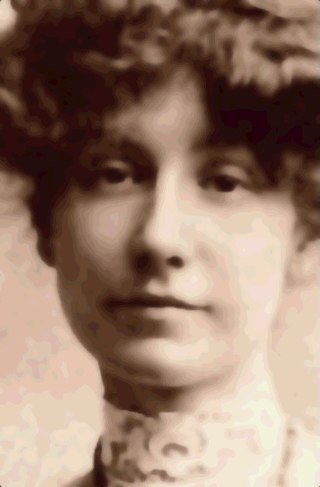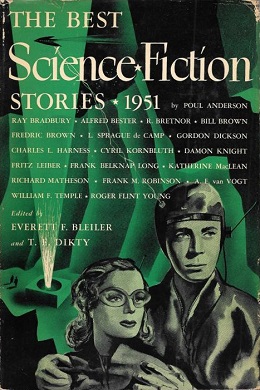Fantasy comedy or comic fantasy is a subgenre of fantasy that is primarily humorous in intent and tone. Typically set in imaginary worlds, fantasy comedy often involves puns on, and parodies of, other works of fantasy.

Fritz Reuter Leiber Jr. was an American writer of fantasy, horror, and science fiction. He was also a poet, actor in theater and films, playwright, and chess expert. With writers such as Robert E. Howard and Michael Moorcock, Leiber is one of the fathers of sword and sorcery and coined the term.

Horror is a genre of fiction that is intended to disturb, frighten or scare. Horror is often divided into the sub-genres of psychological horror and supernatural horror, which are in the realm of speculative fiction. Literary historian J. A. Cuddon, in 1984, defined the horror story as "a piece of fiction in prose of variable length... which shocks, or even frightens the reader, or perhaps induces a feeling of repulsion or loathing". Horror intends to create an eerie and frightening atmosphere for the reader. Often the central menace of a work of horror fiction can be interpreted as a metaphor for larger fears of a society.

Abraham Grace Merritt – known by his byline, A. Merritt – was an American Sunday magazine editor and a writer of fantastic fiction.

Lilith: A Romance is a fantasy novel by Scottish writer George MacDonald, first published in 1895. It was reprinted in paperback by Ballantine Books as the fifth volume of the Ballantine Adult Fantasy series in September 1969.

Margaret Gabrielle Vere Long, who used the pseudonyms Marjorie Bowen and Joseph Shearing, was a British author who wrote historical romances, supernatural horror stories, popular history and biography.

Elements of the supernatural and the fantastic were an element of literature from its beginning. The modern genre is distinguished from tales and folklore which contain fantastic elements, first by the acknowledged fictitious nature of the work, and second by the naming of an author. Works in which the marvels were not necessarily believed, or only half-believed, such as the European romances of chivalry and the tales of the Arabian Nights, slowly evolved into works with such traits. Authors like George MacDonald created the first explicitly fantastic works.

Our Lady of Darkness (1977) is an urban fantasy novel by American author Fritz Leiber. The novel is distinguished for three elements: the heavily autobiographical elements in the story, the use of Jungian psychology that informs the narrative, and its detailed description of "Megapolisomancy", a fictional occult science. It was originally published in shorter form as "The Pale Brown Thing".

Dennis William Etchison was an American writer and editor of fantasy and horror fiction. Etchison referred to his own work as "rather dark, depressing, almost pathologically inward fiction about the individual in relation to the world". Stephen King has called Dennis Etchison "one hell of a fiction writer" and he has been called "the most original living horror writer in America".
Everett Franklin Bleiler was an American editor, bibliographer, and scholar of science fiction, detective fiction, and fantasy literature. In the late 1940s and early 1950s, he co-edited the first "year's best" series of science fiction anthologies, and his Checklist of Fantastic Literature has been called "the foundation of modern SF bibliography". Among his other scholarly works are two Hugo Award–nominated volumes concerning early science fiction—Science-Fiction: The Early Years and Science-Fiction: The Gernsback Years—and the massive Guide to Supernatural Fiction.
Richard James Bleiler is an American bibliographer of science fiction, fantasy, horror, crime, and adventure fiction. He was nominated for the Bram Stoker Award for Best Non-Fiction in 2002 and for the Munsey Award in 2019. He is the son of Everett F. Bleiler.

Night of the Eagle is a 1962 British horror film directed by Sidney Hayers. The script by Charles Beaumont, Richard Matheson and George Baxt was based upon the 1943 Fritz Leiber novel Conjure Wife. The film was retitled Burn, Witch, Burn! for the US release.

The Best Science Fiction Stories: 1951 is a 1951 anthology of science fiction short stories edited by Everett F. Bleiler and T. E. Dikty. An abridged edition was published in the UK by Grayson in 1952 under the title The Best Science Fiction Stories: Second Series. Most of the stories had originally appeared in 1950 in the magazines Fantasy and Science Fiction, Worlds Beyond, Astounding SF, Other Worlds, Galaxy Science Fiction, Fantastic Story Quarterly, Startling Stories, Collier's Weekly, Thrilling Wonder Stories and Weird Tales.

The Best Science Fiction Stories: 1952 is a 1952 anthology of science fiction short stories edited by Everett F. Bleiler and T. E. Dikty. An abridged edition was published in the UK by Grayson in 1953 under the title The Best Science Fiction Stories: Third Series. The stories had originally appeared in 1951 and 1952 in the magazines Super Science Stories, Fantasy and Science Fiction, Galaxy Science Fiction, Worlds Beyond, Startling Stories, New Worlds, Marvel Science Fiction, Esquire, Man’s World and Suspense Magazine.

The Best Science Fiction Stories: 1954 is a 1954 anthology of science fiction short stories edited by Everett F. Bleiler and T. E. Dikty. An abridged edition was published in the UK by Grayson in 1956 under the title The Best Science Fiction Stories: Fifth Series. The stories had originally appeared in 1953 in the magazines Avon Science Fiction and Fantasy Reader, Fantasy and Science Fiction, Amazing Stories, Fantastic, Astounding and Galaxy Science Fiction.

Witches' Brew, also known as Which Witch Is Which?, is a 1980 American comedy horror film co-written and directed by Richard Shorr, and starring Richard Benjamin, Teri Garr, and Lana Turner. It was based on Fritz Leiber Jr.'s horror-fantasy novel Conjure Wife. Herbert L. Strock directed additional sequences for the film.

The Blue Star is a fantasy novel by the American writer Fletcher Pratt, the second of his two major fantasies. It was first published by Twayne Publishers in 1952 in the fantasy anthology Witches Three, a volume that also included Fritz Leiber's Conjure Wife and James Blish's "There Shall Be No Darkness". Its first publication as a stand-alone novel was in paperback by Ballantine Books in May 1969, as the inaugural volume of the Ballantine Adult Fantasy series. The Ballantine edition included an introduction by Lin Carter; it was reprinted twice, in 1975 and 1981. It has also been translated into French, German, Italian and Spanish.

Witches Three is an anthology of three original fantasy stories, edited by the uncredited Fletcher Pratt and published in hardcover by Twayne in 1952. No further editions of the anthology were issued, but each of the stories was later republished.
Henrietta Dorothy Everett who wrote under the pen name Theo Douglas was a British novelist who was popular during her lifetime but who is now largely forgotten. Her identity was revealed in 1910 but little is known of her life.















